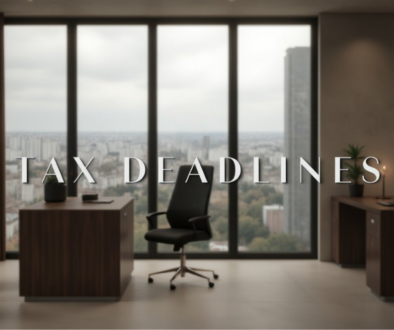Real Estate Tax Tips During the Coronavirus Pandemic: Part II
By Andrew Gradman, Esq.
Trusted Advisor at AB FinWright LLP (www.abfinwright.com) and Founder at Gradman Tax (www.gradmantax.com)
Accepted for publication in the CEB Real Property Law Reporter; reprinted with permission. The published version will reflect new developments and may contain proofreading and other changes. The author thanks Michael Wiener for comments.
This article is the second of a six-part series titled Real Estate Tax Tips During the Coronavirus Pandemic which describes selected deadline extensions and tax refund opportunities relating to real estate and the coronavirus pandemic.
- Introduction and overview of disaster relief provisions
- Net Operating Loss (NOL) Carrybacks (IRC §172)
- Limitation on Excess Business Losses (IRC §461(l))
- Depreciation of Qualified Improvement Property (QIP)
- Business Interest Limitation & Method for Amending Returns
- Deadlines for Qualified Opportunity Zones (IRC §1400Z-2), Like-Kind Exchanges (IRC §1031), Deadlines for Involuntary Conversion (IRC §1033), Deadlines for Low-Income Housing Tax Credits (LIHTC)
We hope you find these article written by Andrew Gradman very helpful. As always, please feel free to reach out to our office at (310) 237-3070 for a consultation on how these opportunities and provisions may help you.
Net Operating Loss (NOL) Carrybacks (IRC §172)
Net operating loss (NOL) carryovers are popular when the economy is good; they allow growing startups to escape taxation on their future profits. NOL carrybacks become popular when the economy falters, as established businesses seek to restate their pre-slowdown profits. By eliminating the 20-year limit on loss carryovers, while also eliminating the conventional two-year carryback, the TCJA projected an optimism about the economy which has been belied by the current crisis.
The CARES Act restores the ability to carry back losses, only for NOLs arising in 2018, 2019, and 2020. These can now be carried back five years, making it possible to use post-TCJA losses to offset income which arose under the higher pre-TCJA rate structure. The CARES Act also reverses a provision in the TCJA which limited the ability to absorb the NOL deduction to 80 percent of taxable income for the year (this reversal will sunset in 2021, but only for NOLs arising after 2017). The CARES Act does not permit NOL carrybacks by real estate investment trusts (REITs), nor does it permit a non-REIT to carry NOLs back to a prior year when it was a REIT.
Note that in 2019, California conformed to the elimination of the NOL carryback for NOLs arising in 2019 tax years and after. See Rev & T C §§17276, 17276.21, 17276.22 (individual taxpayers); Rev & TC §§24416, 24416.21, 24416.22 (corporate taxpayers); Rev & TC §§ 19131.5.




